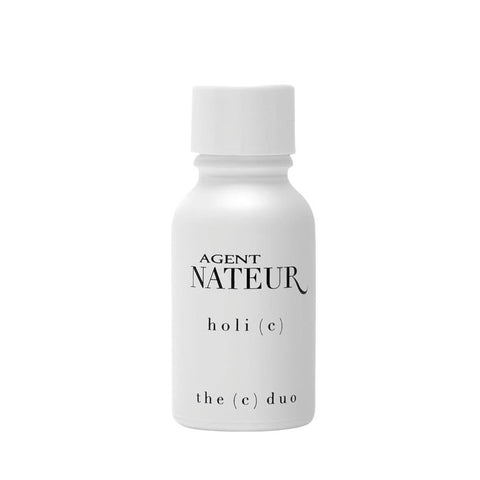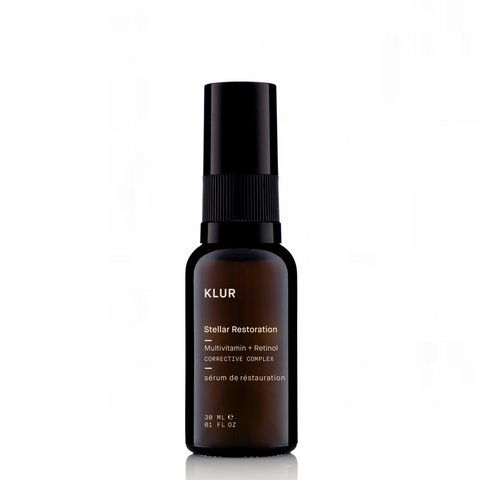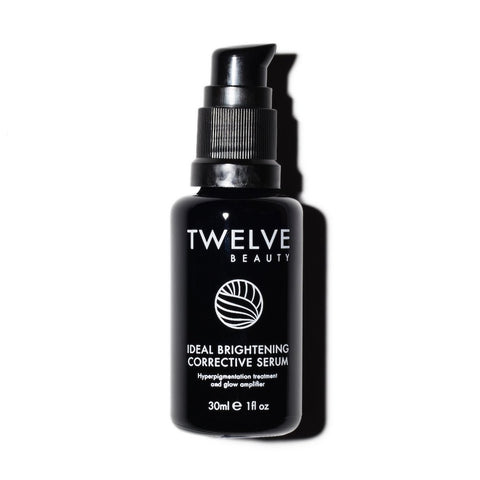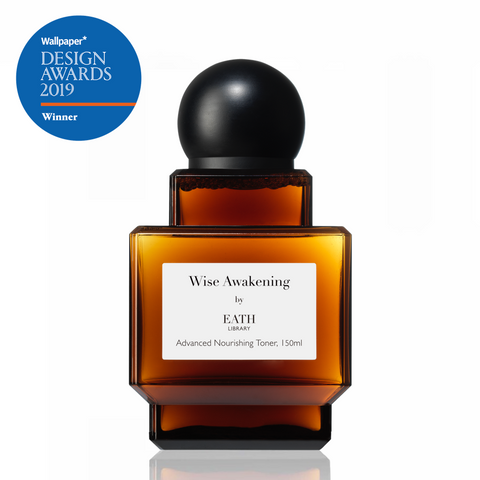Free shipping for HK orders HK$600+
A Comprehensive Guide to Hyperpigmentation
July 26, 2022
We all want to have that even-toned, glass-like radiant skin like all the girls in Korean dramas, however for most people, hyperpigmentations often appear and refuse to go away. Is it impossible for them to fade? No, but it does require a lot of effort. Let’s take a look at what hyperpigmentation is, what causes them, the different types of hyperpigmentation, and how to treat them!
____________________________________
What Is Hyperpigmentation
A common skin condition that affects all skin types and ages, hyperpigmentation is often developed due to melanocyte instability. Melanin is formed in a skin cell called a melanocyte, and these pigment-producing cells live at the dermo-epidermal junction and basal layers of our skin. Under normal circumstances, they protect the skin from UV rays, however, they can become hyperactive if triggered and start overproducing melanin, leading to hyperpigmentation and spots; and the more baseline melanin there is in the skin, the more risk there is of developing hyperpigmentation.
____________________________________
What Causes Hyperpigmentation
Hyperpigmentation is multifactorial. When there is inflammation in the skin, which can be caused by UV damage, acne, picking and irritating the skin, free radicals, harsh cleanser, and hormonal fluctuations, such as pregnancy or taking contraceptive pills, a signal is sent to the melanocytes as part of an immune response. The melanocytes then overproduce the brown melanin pigment, resulting in the hyperpigmentation on the skin that we see. Whilst, genetic, metabolic, hormonal and environmental factors will determine their severity, how long they will linger, and how they are best treated.
This essentially means, one shouldn't only use brightening products during summer or occasionally when they start seeing hyperpigmentation, because melanocytes are literally being stimulated every single day.
____________________________________
Three Main Kinds of Hyperpigmentation
1. Post-inflammatory
Red/brown spots that we are left with as a result of acne, picking and irritating the skin, harsh cleansers, or even a scratch, is called post-inflammatory hyperpigmentation, and they are arguably the easiest kind to treat. (Note that this does not include indented/icepick scars.)
2. Age Spots
Often found on areas of the skin that are most exposed to the sun (think your cheekbones and the bridge of your nose), these brown spots are the result of UV damage that have accumulated throughout the years. They are the result of decades of photoaging, which only tend to surface decades later.
3. Hormonal
Often referred to as melasma, this type of hyperpigmentation affects 10-15% of pregnant women, and 10-25% of women taking the contraceptive pill, due to a change in hormonal balance. As these spots are the result of an internal issue, they are the hardest type to fight topically.
____________________________________
Best Ways To Get Rid of Hyperpigmentations
The most misunderstood idea about hyperpigmentation is that it dissolves and melts away. It doesn't, and can't.
Here's the scientific truth——melanin production begins in the deeper layers of the skin, and then naturally rises to the surface where it concentrates and become what we perceive as pigmentation. The skin is constantly regenerating, which means the pigmented cells will eventually shed off. Unfortunately, melanin tends to form faster than it is shed away, thus if left accumulated, pigmentation issues will become deeply rooted and hard to improve. What this means is, there are two key categories in improving hyperpigmentation: treatment and prevention.
For those already pigmented cells, you can treat them by using retinol and speeding up cell turnover with acids. Because they literally come from the deep layers of the skin to the skin surface to get shed off, sometimes you will find them getting visibly darker first before turning lighter, but that is absolutely normal and part of the improvement process.
As for prevention, it means you have to slow down and prevent melanin overproduction, which can be done by inhibiting tyrosinase activity, reducing skin inflammation, and preventing photoaging throughout the year, not just during summer or when you start seeing spots appearing.
So don’t be fooled by all the products and marketing gimmicks that claim to banish all hyperpigmentation in 7 days (or even 28 days, really). Ask any dermatologist and they will tell you hyperpigmentation is never an overnight fix. It is a long fight and requires consistency.
The truth is, some products simply use light-reflective ingredients in their formulas to trick the eyes and give you a false sense of lightened hyperpigmentation or even skin tone. Ever feel like once you stop using a certain product, the hyperpigmentation instantly comes back, and skin seems less radiant? Well of course, because they never went away in the first place!
Use Retinol
Proven to help with all types of hyperpigmentation, retinol penetrates deep into the skin and reduces melanin by blocking the transcription of tyrosinase, induce desquamation, disperse keratinocyte pigment granules and enhance epidermal cell turnover. It also reduces cell damage, boosts repair, regulates oil production, treats acne, and boosts collagen formation.
Product Recommendation
KLUR
Sculpture + A Overnight Enrichment Cream <- Click to shop
Product Recommendation
KLUR
Stellar Restoration Corrective Complex <- Click to shop
Speed Up Cell Turnover
When old melanin cannot move to the top layer of the skin and get shedded off, pigmentation will stay in the skin and refuse to fade. Unfortunately, as we get older, the speed and efficiency of our cell renewal process decrease significantly——from 14-21 days in our 20s, to 28-45 days in our 30s, 45-60 days in our 40s, and 90 days in our 50s-60s on average!
By using a blend of AHAs, BHAs and PHAs, unwanted aged melanin can shed off much easier and quicker. Not only will the skin look more even-toned and brighter, what’s better, with time, they accelerate cell turnover and increase the amount of collagen, as well as hyaluronic acid production within the dermis, so the skin will appear more plumped, smooth and bouncy.
Product Recommendation
OUMERE
No. 9 Exfoliant <- Click to shop
Product Recommendation
Agent Nateur
holi(bright) Resurface Glass Face Mask <- Click to shop
Inhibit Tyrosinase Activity
Tyrosinase is the enzyme responsible in synthesizing melanin through melanogenesis. By inhibiting its activities and breaking it down, you can speed up the fading of existing hyperpigmentation whilst preventing future spots from forming. Ingredients that can inhibit tyrosinase activity includes Vitamin C (for example, Sodium Ascorbyl Phosphate and Tetrahexyldecyl Ascorbate THD), Ellagic Acid, Ferulic Acid, Niacinamide, Iridoids, Cornus Fruit Extract, Ginsenocide, Licorice Root, Noni, Mallow, Yarrow, Broccoli Sprout, Hawkweed, Daisy, Pearl Powder, and Resveratrol, etc.
Product Recommendation
EATH LIBRARY
The Pure Wonder Active Serum <- Click to shop
Product Recommendation
KLUR
Brilliant Light Multi-Correction Repair Serum <- Click to shop

Product Recommendation
AGENT NATEUR
holi(c) The C Duo <- Click to shop
Product Recommendation
KLUR
Unseasonal Kind Lipid Replenishment Oil <- Click to shop
Reduce Skin Inflammation
As mentioned above, when there is inflammation in the skin, a signal is sent to the melanocytes as part of an immune response, when then result in an overproduction of melanin, resulting in visible hyperpigmentation on the skin and dullness. It is therefore essential to bring down this pigmentation-inducing inflammation, so that our melanin production will not go into overdrive.
Product Recommendation
EATH Library
All Day Radiance Light Concentration Cream <- Click to shop
Product Recommendation
TWELVE BEAUTY
Ideal Brightening Corrective Serum <- Click to shop
Prevent Photoaging
One of the obvious damages from UV exposure is tanned and burnt skin, but that's not all. UV rays penetrate deep into the skin and cause cumulative damages to our DNA at the cellular level. These damages may be initially invisible to the eye, but the fact that they are affecting everything from the surface to the deepest layers of the skin is indisputable, and it can take years for sun damage to become visible because of the depth at which the UV rays damage skin cells, i.e. the dark spots you see now are the result from your teenage years, and if you don't prevent photoaging in your early 30s, more and more pigmentation will show up when you are in your 40s and 50s.
This essentially means, photoaging has to be prevented and reversed as early in life as possible, so that we can prevent our tyrosinase from getting used to producing melanin at a high level and accumulate at the deep layers in the skin. Otherwise, stubborn pigmentation will eventually show up later in life.
Product Recommendation
OUMERE
UV-R™ <- Click to shop
Product Recommendation
EATH LIBRARY
Wise Awakening Advanced Nourishing Toner <- Click to shop
Also in The Journal

The Anti-Aging Gold Standard: How Retinol Reshapes The Skin
November 12, 2025
Learn why retinol is the gold standard for anti-aging, how it works, what similar ingredients exist, and some common myths and misconceptions.

The Gut-Skin Connection: The Path to Healthy Skin
October 26, 2025
Acne, eczema, rosacea, and sensitivity can all be linked to the gut health, and even gluten? Learn all about the connection between the gut and the skin.

The Secret to Reversing Skin Aging! How Growth Factors & Peptides Help Turn Back the Clock
October 13, 2025
Tired of wrinkles, sagging skin, lack of elasticity, inflammation, dryness, and even hair loss? Learn how growth factors and peptides reverse skin aging.
+Recent Articles
-
The Anti-Aging Gold Standard: How Retinol Reshapes The Skin
November 12, 2025
-
The Gut-Skin Connection: The Path to Healthy Skin
October 26, 2025
-
The Secret to Reversing Skin Aging! How Growth Factors & Peptides Help Turn Back the Clock
October 13, 2025
-
The Best Ways and Times to Take Different Supplements
August 19, 2025
-
Luxury vs. Budget-Friendly Skincare Products——What Are Their Differences?
August 06, 2025
-
How to Prevent and Improve Post-Inflammatory Hyperpigmentation (PIH)
July 10, 2025
-
How to Prevent and Improve Post-Inflammatory Erythema (PIE)
July 08, 2025
-
The Ultimate Cleansing Guide to Improve Skin Conditions
June 03, 2025
-
Do You Have Sugar Face? How Does Sugar Affect Our Skin and Appearance?
May 20, 2025
-
Do You Have Gluten Face? How Does Gluten Affect Our Skin and Appearance?
April 15, 2025
Subscribe to get skincare knowledge delivered to your inbox!













